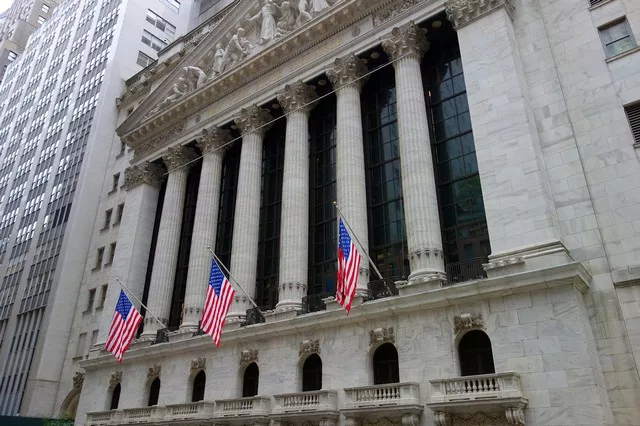Future trading in the stock market is a dynamic and essential component of the global financial landscape. It allows participants to speculate on the future price movements of various financial assets, including stocks, commodities, and indices.
What is Future Trading?
Future trading, also known as futures trading, is a financial practice that involves the buying and selling of standardized contracts known as futures contracts. These contracts obligate the parties involved to buy or sell a specific quantity of an underlying asset at a predetermined price and date in the future. Future trading can encompass a wide range of assets, from stocks and bonds to commodities like oil and agricultural products.
The Basics of Future Trading
a. Contract Specifications: Each futures contract has predefined terms, including the type of asset, contract size, delivery date, and price quotation method. These standardized contracts provide transparency and liquidity in the market.
b. Market Participants: Future trading attracts a diverse group of participants, including speculators, hedgers, arbitrageurs, and institutional investors. Speculators aim to profit from price fluctuations, while hedgers use futures to mitigate risk. Arbitrageurs exploit price differences in related markets.
c. Leverage: Leverage is a hallmark of future trading. It enables traders to control larger positions with a relatively small amount of capital. While leverage can amplify profits, it also increases the potential for losses.
d. Expiration and Settlement: Futures contracts have predetermined expiration dates when the contract is settled. Settlement can occur through physical delivery of the underlying asset (in the case of commodity futures) or cash settlement, where profits or losses are exchanged in cash.
e. Margin Requirements: Future trading typically involves margin accounts, where traders must maintain a certain amount of capital to cover potential losses. Margin requirements vary depending on the contract’s volatility and market conditions.
Purposes of Future Trading
a. Speculation: Many participants engage in future trading for speculative purposes. By taking positions in futures contracts, they aim to profit from anticipated price movements in the underlying assets.
b. Risk Management: Hedgers use futures contracts to manage various forms of risk. For example, a wheat farmer can hedge against price fluctuations by selling wheat futures contracts to lock in a selling price.
c. Portfolio Diversification: Future trading offers opportunities to diversify investment portfolios by gaining exposure to different asset classes, such as commodities, currencies, and indices.
d. Arbitrage: Arbitrageurs seek to profit from price discrepancies between related markets. They simultaneously buy and sell related contracts to capture risk-free profits.
Types of Futures Contracts
a. Stock Futures: Stock futures contracts are based on the performance of individual stocks or equity indices. Traders can speculate on the future price movements of specific companies or broad market indices.
b. Commodity Futures: Commodity futures involve underlying assets like oil, gold, agricultural products, and metals. These contracts allow traders to speculate on commodity prices or hedge against price fluctuations.
c. Currency Futures: Currency futures are based on foreign exchange rates. Traders can speculate on the exchange rate between two currencies or use these contracts for hedging international transactions.
d. Interest Rate Futures: Interest rate futures are linked to the future value of interest rates. They are commonly used for hedging against interest rate risk in fixed-income investments.
e. Index Futures: Index futures contracts derive their value from specific stock indices, such as the S&P 500 or Dow Jones Industrial Average. Traders can gain exposure to broad market trends through these contracts.
Strategies in Future Trading
a. Directional Trading: Traders can take positions in futures contracts based on their outlook for the underlying asset’s price. Going long (buying) profits from rising prices, while going short (selling) profits from falling prices.
b. Spread Trading: Spread trading involves taking offsetting positions in two related futures contracts to profit from the price difference between them. For example, trading the spread between different delivery months of the same commodity.
c. Arbitrage Strategies: Arbitrageurs identify price discrepancies in related markets and execute simultaneous buy and sell orders to capture risk-free profits.
d. Hedging: Hedgers use futures contracts to offset the risk of adverse price movements in their portfolios. This strategy involves taking a position opposite to their existing exposure.
e. Options Strategies: Options on futures contracts offer various strategies, including covered calls, protective puts, and straddles, to manage risk and enhance returns.
Risk Management in Future Trading
a. Position Sizing: Determining the appropriate position size based on risk tolerance and capital management principles is crucial for limiting potential losses.
b. Stop-Loss Orders: Implementing stop-loss orders can automatically close out positions if they move against the trader beyond a specified threshold, helping to minimize losses.
c. Diversification: Diversifying a futures trading portfolio by trading different types of contracts can spread risk and reduce the impact of adverse movements in one contract.
d. Margin Management: Monitoring and managing margin requirements is essential, especially when trading contracts with leverage. Traders must maintain adequate margin to cover potential losses.
e. Continuous Learning: Staying informed about market developments, economic indicators, and geopolitical events that may impact futures prices is essential for making informed trading decisions.
Conclusion
Future trading plays a vital role in modern financial markets, offering opportunities for speculation, risk management, and portfolio diversification. By understanding the fundamentals of future trading, selecting appropriate strategies, and implementing effective risk management techniques, traders can participate in these dynamic markets with confidence. Continuous learning, discipline, and careful monitoring are key to success in future trading.

